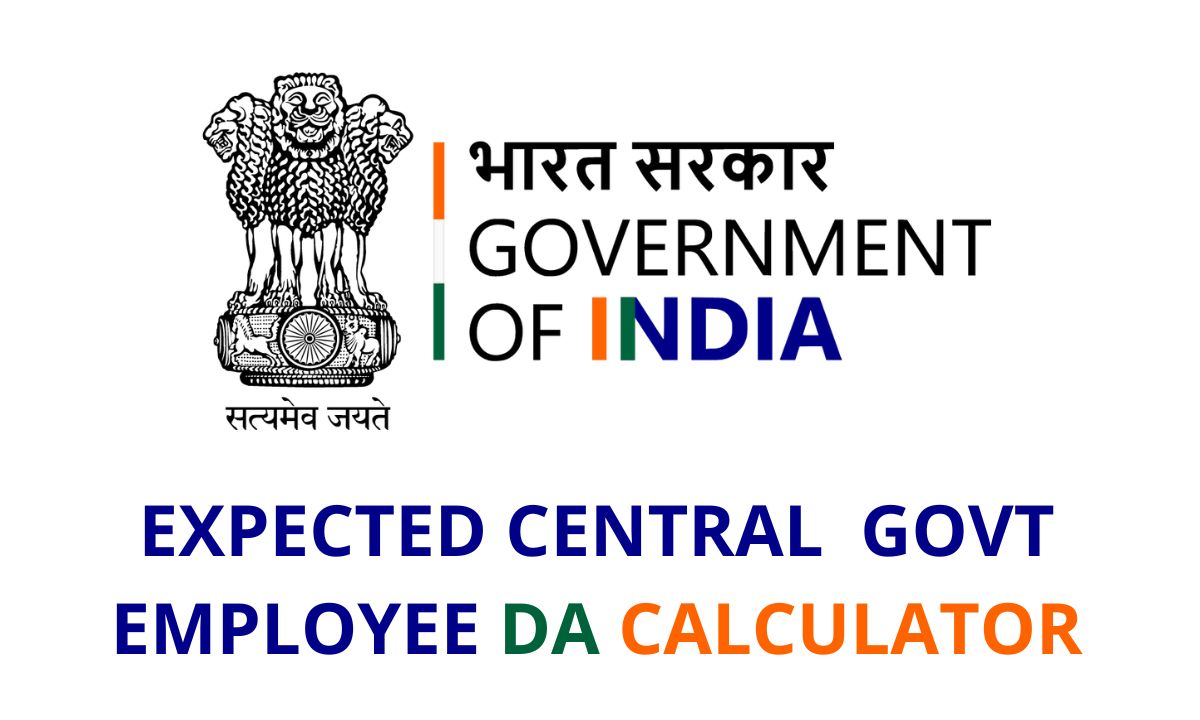
Expected DA Calculator from January 2023
Dearness Allowance (DA) is a cost-of-living adjustment benefit provided to employees in order to help them maintain their standard of living and purchasing power in the face of growing living expenses. Employees of public sector organizations as well as some private sector companies are frequently paid for it.
Expected Dearness Allowance Calculator From January 2023
For Central Government employees and pensioners, the “Expected Dearness Allowance (DA) from January 2023″ maybe 4%, and the total DA from January 2023 may be increased to 42%. With effect from 1.7.2022, all Central Government employees, pensioners, and family pensioners will receive Dearness Allowance at a rate that is 4% more than the current rate.
DA Calculation formula 2023
DA in salary is calculated for public sector employees and pensioners:
- Central Government employees
DA% = [(Average of AICPI (Base Year 2001 = 100) for the last 12 months – 115.76)/115.76] x 100
- Public sector employees
DA% = [(Average of AICPIN (Base Year 2001 = 100) for the last 3 months – 126.33)/126.33] x 100
Here, AICPIN means All-India Consumer Price Index
DA Calculation Table – January 2023
Basic Salary:
Dearness Allowance:
Total Salary:
Also, there is another Expected DA Calculation for Bank Employees too.
Dearness Allowance for Pensioners
The pension for retired public-sector personnel is altered whenever a pay commission approves a new salary structure. The pension of retired public sector personnel rises in lockstep with increases in DA. Both family and regular pensions are affected by this.
If DA is given on a fixed pay or time scale, pensioners who re-enter the workforce are not eligible to receive it. Re-employed pensioners may, however, be eligible for DA that is only restricted to their last drawn pay in other circumstances.
Pensioners who are living abroad while re-employed do not receive the dearness allowance. Pensioners who live abroad without finding new employment, however, are still eligible for DA on their pension.
Variable Dearness Allowance Calculator
Employees of the Central Government are subject to Variable Dearness Allowance (VDA). To lessen the effects of growing inflation rates, it is updated every six months in accordance with the CPI. VDA is dependent on the three elements listed below in order of importance.
The following formulas are used to calculate how much there is a pricing difference for labor.
- L = W x (LQ-LB)/LB x (LC/100)
- L – Amount of price variation in Labour
- W – The gross value of work done by the Contractor as per on-account bill(s) excluding the cost of material supplied by railway at a fixed price, minus the price value of cement and steel. This will also exclude specific payment, if any, to be made to the consultants engaged by Contractors (such payment shall be indicated in the Contractor’s offer)
- LB – Consumer Price Index for Industrial Workers – All India: Published in RBI bulletin for the base period
- LQ – Consumer Price Index for Industrial Workers – All India: Published in RBI bulletin for the average price index of the 3 months of the quarter under consideration
- LC – % of Labour Component.
Example: 1) Sept 2020 CPI (IW) of Base Year 2001 = Sept 2020 CPI (IW) of Base Year 2016 x Linking Factor i.e 118 x 2.88 = 339.84.
2) LQ = (336+338+339.84)/3 i.e 337.95.
DA Is Considered Income Tax
According to the requirements of the Income Tax Act of 1961, salaried employees are subject to tax at the full rate. Consider a scenario where a paid person receives rent-free housing from their workplace and all the prerequisites are satisfied. In that situation, DA is added to the compensation up to the point at which it is a component of the retirement benefit salary. Individuals must disclose their tax liabilities related to DA when completing their tax returns under the Income Tax Act.
